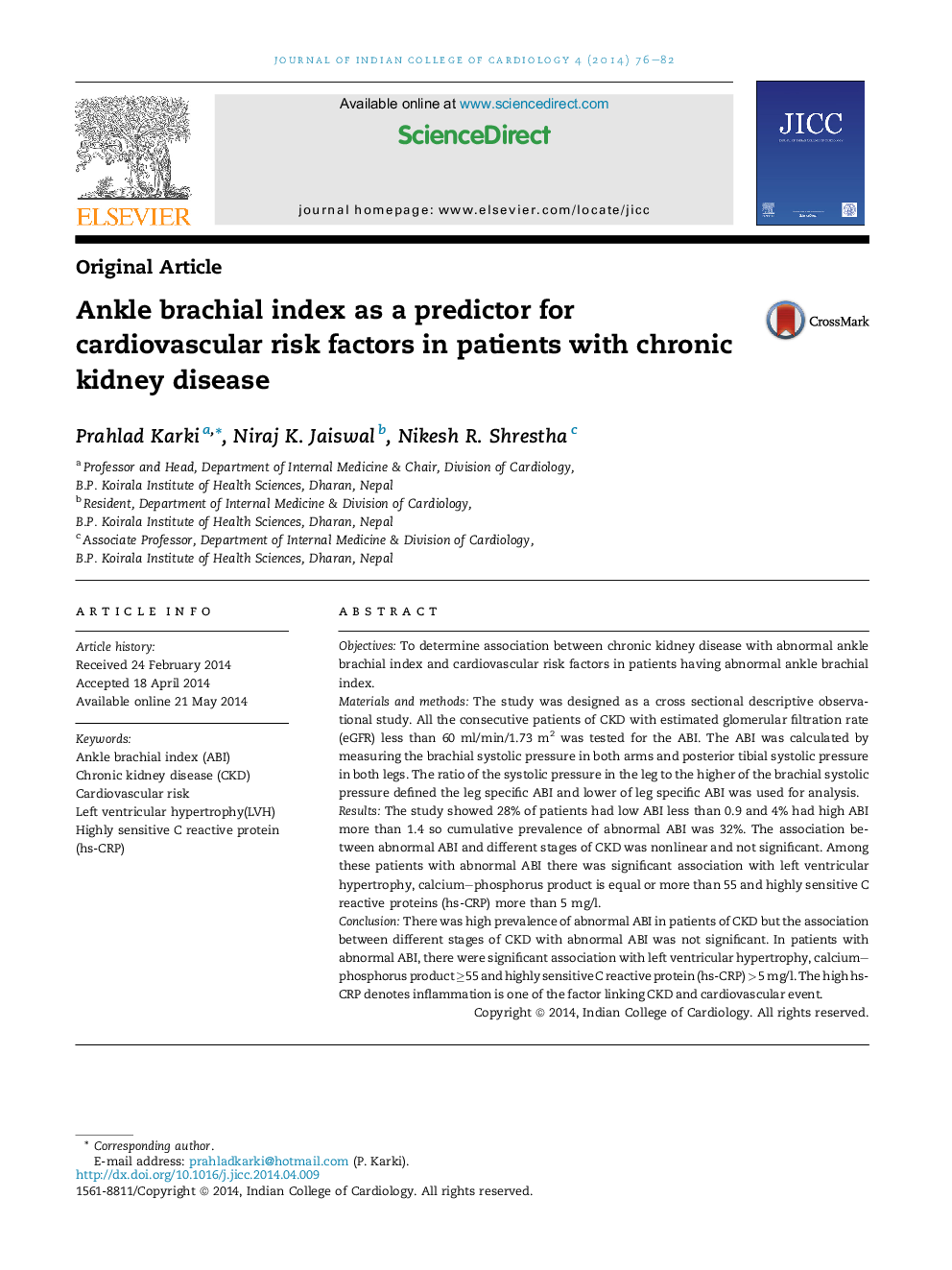| Article ID | Journal | Published Year | Pages | File Type |
|---|---|---|---|---|
| 2973756 | Journal of Indian College of Cardiology | 2014 | 7 Pages |
ObjectivesTo determine association between chronic kidney disease with abnormal ankle brachial index and cardiovascular risk factors in patients having abnormal ankle brachial index.Materials and methodsThe study was designed as a cross sectional descriptive observational study. All the consecutive patients of CKD with estimated glomerular filtration rate (eGFR) less than 60 ml/min/1.73 m2 was tested for the ABI. The ABI was calculated by measuring the brachial systolic pressure in both arms and posterior tibial systolic pressure in both legs. The ratio of the systolic pressure in the leg to the higher of the brachial systolic pressure defined the leg specific ABI and lower of leg specific ABI was used for analysis.ResultsThe study showed 28% of patients had low ABI less than 0.9 and 4% had high ABI more than 1.4 so cumulative prevalence of abnormal ABI was 32%. The association between abnormal ABI and different stages of CKD was nonlinear and not significant. Among these patients with abnormal ABI there was significant association with left ventricular hypertrophy, calcium–phosphorus product is equal or more than 55 and highly sensitive C reactive proteins (hs-CRP) more than 5 mg/l.ConclusionThere was high prevalence of abnormal ABI in patients of CKD but the association between different stages of CKD with abnormal ABI was not significant. In patients with abnormal ABI, there were significant association with left ventricular hypertrophy, calcium–phosphorus product ≥55 and highly sensitive C reactive protein (hs-CRP) > 5 mg/l. The high hs-CRP denotes inflammation is one of the factor linking CKD and cardiovascular event.
